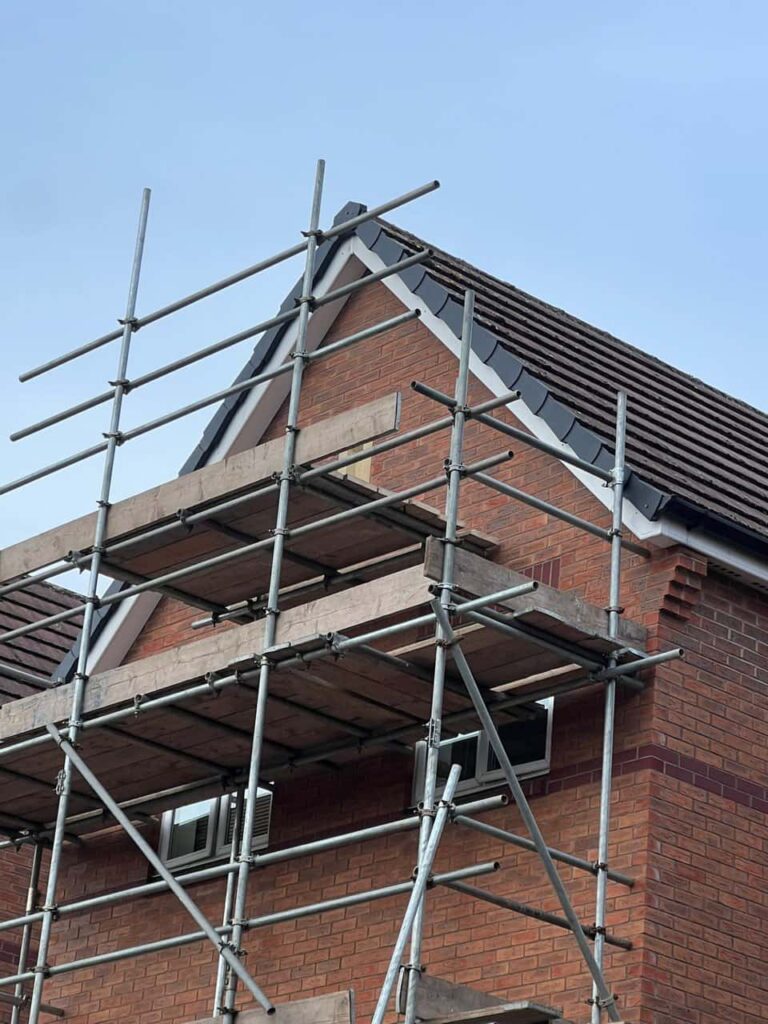Lead flashing is one of the most vital components of a weatherproof roof, yet it’s often overlooked until problems arise. At Littleport Roofing Repairs, we frequently see water ingress caused by damaged or missing flashing. This simple strip of lead plays a crucial role in protecting vulnerable joints where the roof meets walls, chimneys, or other structures. Knowing how to spot issues and deal with them quickly can prevent more serious damage.
What Is Lead Flashing and Why Is It Important?
Lead flashing is a malleable sheet material fitted at junctions, such as around chimneys, roof valleys, and roof edges. Its job is to create a watertight seal and channel rainwater safely away. Without it, water would easily seep into the roof space, causing damp, rot, and potential structural issues.
Common Signs Your Lead Flashing Needs Attention
Before thinking about repairs, it’s important to recognise when lead flashing might be failing:
- Visible Gaps or Cracks – Gaps where flashing meets brickwork or tiles can let water in.
- Loose or Missing Sections – Dislodged flashing is a clear sign it needs repair or replacement.
- Water Stains Indoors – Damp patches on ceilings or walls near chimneys or roof edges may indicate flashing failure.
- Corrosion or Deterioration – Lead is durable, but decades of exposure can eventually wear it down.
How to Approach Lead Flashing Repairs
Although some repairs may seem straightforward, it’s essential to proceed with care to avoid creating further issues.
1. Inspect the Area Safely
Check the flashing from ground level first, using binoculars if needed. If you need closer inspection, use proper roof access equipment and follow safety precautions.
2. Clean the Joint
Any dirt, moss, or old mortar should be removed so new sealant or mortar adheres properly.
3. Secure or Replace the Lead
If the lead is loose but undamaged, it can often be re-fixed and re-dressed back into place. If it is cracked or split, sections may need replacing with new lead flashing.
4. Repoint the Chase
Where flashing is set into brickwork, repointing the mortar joint ensures a secure, watertight finish.
5. Test for Leaks
Once repairs are completed, check for proper water run-off and make sure there are no visible gaps.
Why Professional Help Is Often the Best Choice
While minor sealing can sometimes be a DIY job, proper lead flashing repairs require skill and experience. Poorly installed flashing can lead to further leaks, structural damage, and unnecessary expense. At Littleport Roofing Repairs, we use proven techniques and high-quality materials to restore flashing to its optimal condition.
Conclusion
Lead flashing may be a small component of your roof, but it plays a big role in keeping water out. Acting quickly when you spot damage can prevent costly water intrusion and preserve the integrity of your property. For thorough inspections and expert repairs, Littleport Roofing Repairs is your trusted choice for dependable roofing solutions.
Call us on: 01353 881 094
Click here to find out more about Littleport Roofing Repairs
Click here to complete our contact form and see how we can help with your roofing needs.

